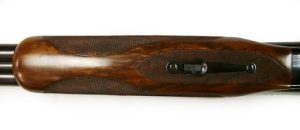Time to Retire the Beavertail Forend?
Shotgun beavertail forends have been a staple in the world of shotguns for decades, providing shooters with added grip and control. However, as technology and design continue to evolve, some are questioning whether it’s time to retire the traditional beavertail forend in favor of more modern alternatives. In this article, we will examine the viability of the shotgun beavertail forend and make a case for potentially phasing it out in favor of more efficient options.
Examining the Viability of the Beavertail Forend
One of the main advantages of the shotgun beavertail forend is the added grip and control it provides for shooters. The extended design allows for a more secure hold on the firearm, especially during rapid or repeated firing. This can be particularly beneficial for shooters who require precise aim and stability, such as hunters or competitive shooters. The beavertail forend also helps to absorb recoil, reducing the impact on the shooter’s hands and wrists.

However, despite its benefits, the shotgun beavertail forend does have its limitations. One common criticism is that the extended design can make the shotgun feel bulky and cumbersome, especially for shooters with smaller hands. Additionally, the beavertail forend may not be as versatile as other grip options, limiting the customization options for shooters looking to tailor their shotgun to their specific needs and preferences. As new grip technologies continue to emerge, some shooters may find that the beavertail forend is no longer the most practical or efficient choice for their shooting needs.
The Case for Retiring the Traditional Beavertail Forend
As we move towards a more innovative and technology-driven era, it may be time to retire the traditional shotgun beavertail forend in favor of more modern grip options. New materials and designs are constantly being developed to enhance grip, control, and comfort for shooters. From adjustable grips to ergonomic designs, there are now more options available to cater to a wider range of shooting styles and preferences.

By retiring the shotgun beavertail forend, shooters may be able to take advantage of these newer, more advanced grip options that could potentially improve their shooting experience. While the beavertail forend has served shooters well for many years, it may be time to embrace the future of shotgun technology and explore the benefits of more innovative grip designs. As shooters continue to demand more customization and efficiency from their firearms, retiring the traditional beavertail forend could be a step towards meeting those evolving needs in the world of shotguns.

While the shotgun beavertail forend has been a trusted companion for shooters for generations, it’s important to recognize that times are changing. As new grip technologies emerge and shooters demand more versatility and customization from their firearms, it may be time to retire the traditional beavertail forend in favor of more modern alternatives. By exploring the benefits of newer grip designs, shooters can potentially enhance their shooting experience and adapt to the evolving landscape of shotgun technology.
Whether it’s time to retire the beavertail forend likely depends on the specific use case and personal preferences. For competitive shooters or those who fire many rounds in quick succession, the added heat protection and grip surface may still be valuable. For hunters or casual shooters, a slimmer forend might be preferable.
Many modern shotgun designs are moving towards slimmer, more ergonomic forends that still offer good control without the bulk of a full beavertail. This trend suggests that while the beavertail may not be fully “retired,” its prominence is diminishing in favor of more streamlined designs.
# # #


Comments